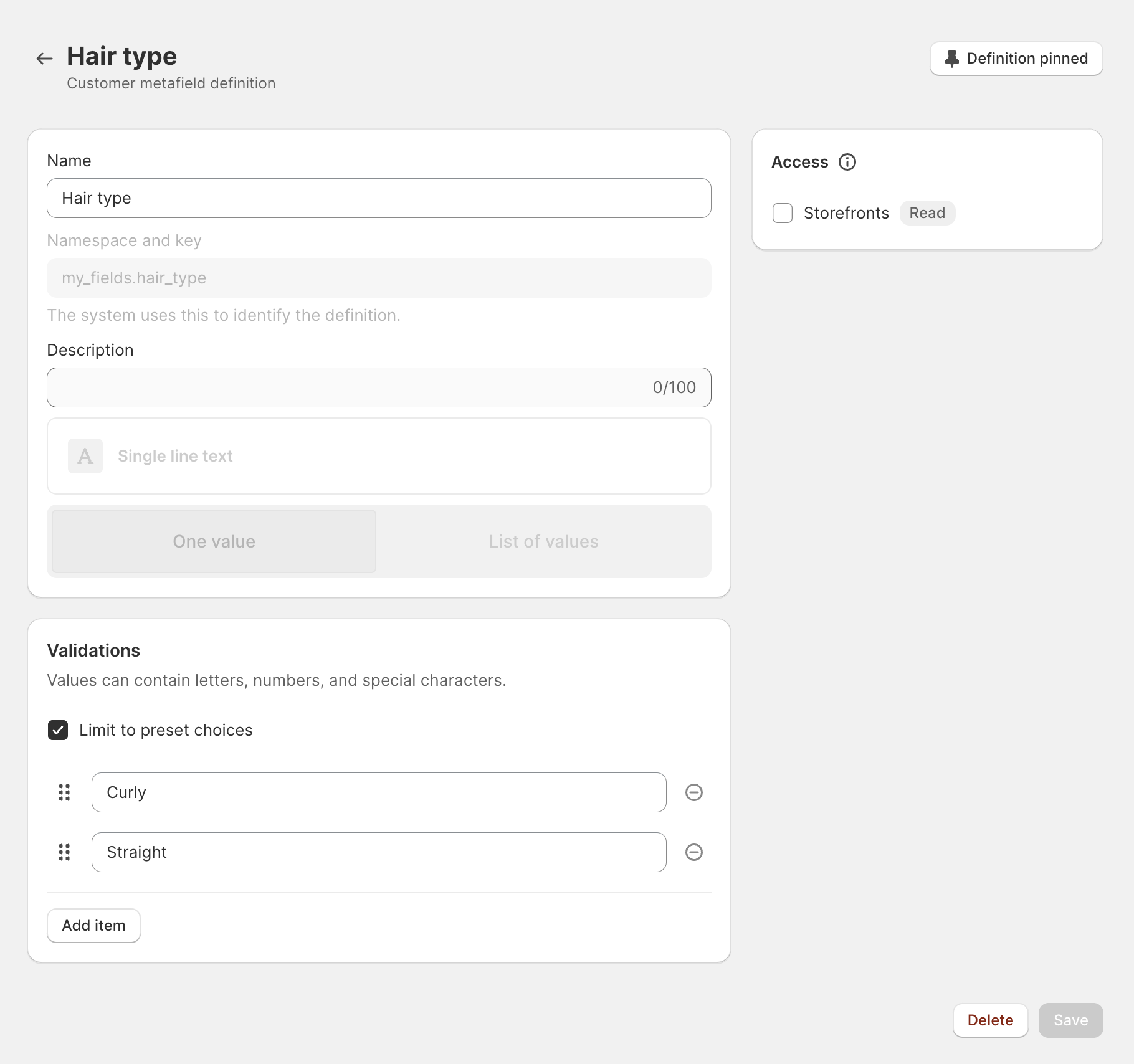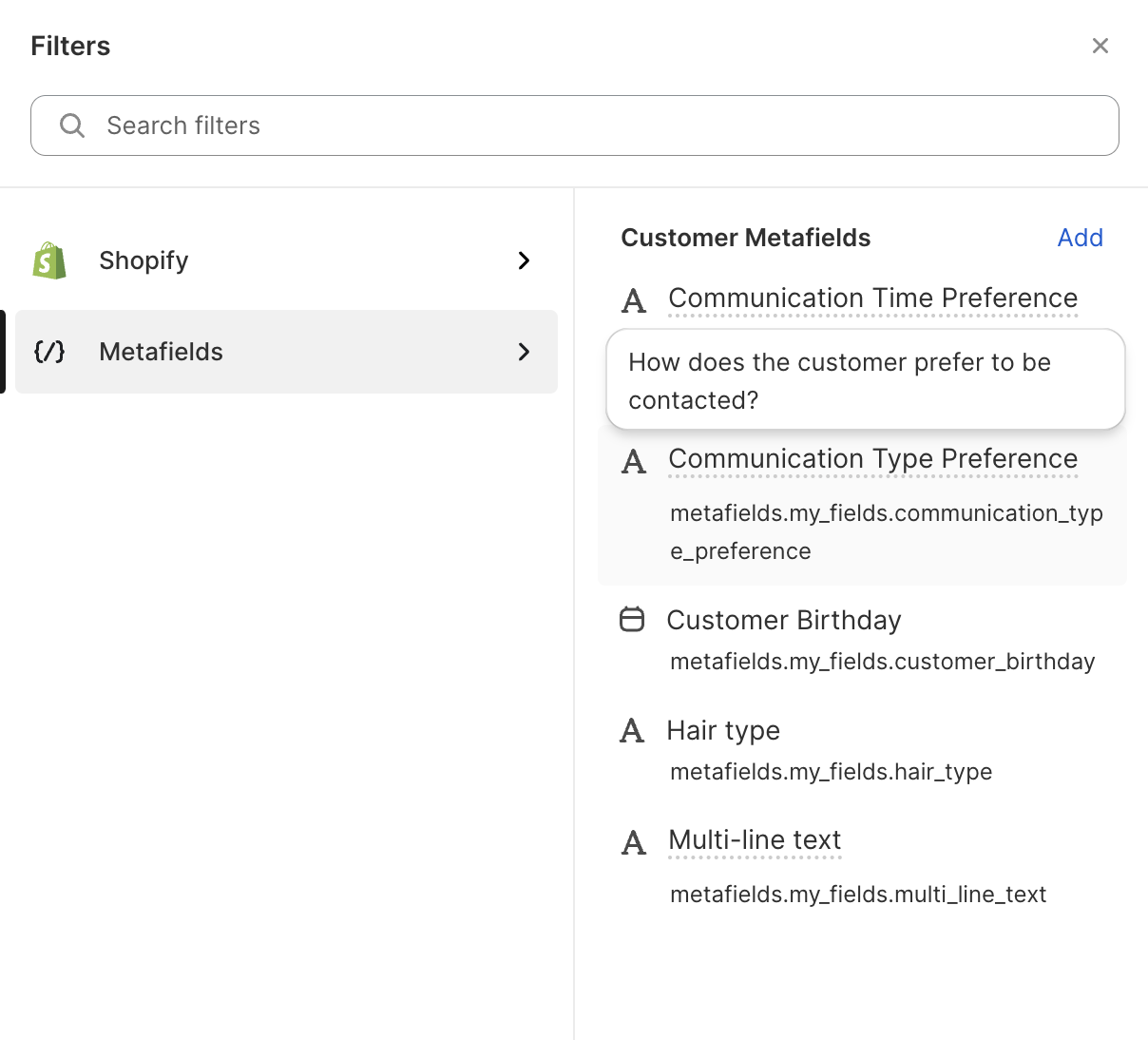
Metafields in Customer Segmentation
Shopify
Senior Product Designer
Summary
With the power of metafields, Shopify store owners were able to increase email conversion rates by 175% during the closed beta. I identified the need for a more powerful segmentation tool through in-depth research, user interviews, and data analysis. The design solutions addressed challenges shop owners had in understanding how to use metafields such as:
- a segment editor suggestion
- an organized segment filter list
By focusing on a user-centred approach, there was an increase in user satisfaction on what was a confusing tool and positively impacted store owners' marketing efforts like Paula, a beauty supply merchant who participated in the closed beta.
Meet Paula

Paula is a Shopify merchant who owns a beauty supply company. Paula allows her customers to self disclose their skin type, hair style and colour. After customers provide personal details while shopping, the product page shown to them relates to the details that were given. When Paula uses the Customer Segmentation feature she is able to segment customers based on location and past products purchased but this only tells a part of her customers story.
What if a customer hasn't purchased before or if their preferences have changed since their last order? How might we empower Paula to segment customers based on the unique data she has?
Segmentation? Metafields? What does all this mean?
Customer Segmentation
If you have never heard the term “customer segmentation,” it’s the practice of grouping your existing customers (and email subscribers) together based on criteria that you define. Examples of this include the amount of money they’ve spent, the number of orders they’ve placed, where they’re located, or how they’ve interacted with your brand in the past (i.e., opened an email or clicked on an email). By grouping these customers/subscribers together based on common characteristics, it’s easier to personalize marketing to that specific audience, which, in turn, will lead to greater revenue growth.

Metafields
Metafields help merchants control how they tell the story of their business or product inside Shopify. For example, to add an accurate description of a product you’re selling on Shopify, merchants often need more than a title, description, and price. Perhaps it’s a winter jacket with different temperature ratings, or a face cream with variable SPF ratings. Metafields customizes a merchants individual Shopify platform around resources — like customers, product, or even orders — to make Shopify better suited to the business they have and the products they sell.

Problem: How might we empower merchants to create personalized marketing campaigns by incorporating Shopify metafields?
Many Shopify merchants struggled to personalize their marketing messages and target appropriate customers. They also found that many merchants did not clearly understand their customer base, making it difficult to create targeted marketing campaigns. Additionally, merchants needed a more powerful tool to leverage customer metafields in their segmentation strategies. I identified the need to enhance the customer segmentation feature by giving merchants the ability to refine and personalize marketing campaigns.
Research
I started by conducting user interviews and surveys to gain a deeper understanding of the pain points of Shopify merchants. I also analyzed data from the platform to understand how merchants used customer data, including how they used metafields within their stores.
Design
Based on the discussions with merchant's like Paula and other research findings, I aimed to enhance the customer segmentation feature by incorporating Shopify metafields. This addition would allow merchants to easily group customers based on metafields data. In addition, the feature would also provide insights into customer behaviour, enabling merchants to create targeted marketing campaigns.
To address the challenges identified during the research, I devised several solutions:
Design Solution: Segment Editor Suggestion
- Use icons corresponding to the ones displayed during the data type selection in the metafield creation flow.
- Display the metafield's title, namespace, and key to help merchants identify the correct metafield for segmentation.

Design Solution: Organized Segment Filter List
- Add search functionality to facilitate easy navigation through the list of available filters.
- Separate Shopify-created and merchant-created filters to assist in data management.
- Display an icon that represents the data type for easier identification.
- Incorporate hover effects on the title to display the metafield's description.

Implementation
The enhanced customer segmentation feature, including support for Shopify metafields, was launched on the Shopify platform and received positive feedback from merchants. The feature was intuitive and easy to use, allowing merchants to segment their customers quickly and effectively using metafields. It also helped merchants create targeted marketing campaigns, increasing revenue and customer engagement.
During the closed beta, Paula (our beauty supply merchant) successfully used the metafields in customer segmentation feature to refine their customer groups based on location, purchase history, and self-disclosed skin and hair types using Metafields. These new powerful segments led to a 175% increase in their email conversion rates.
Impact
The customer segmentation feature with Shopify metafields, empowers merchants to segment their customers more effectively and create personalized marketing campaigns. My research and usability testing ensured that the enhanced feature was easy to use and understand, leading to increased user adoption and satisfaction.